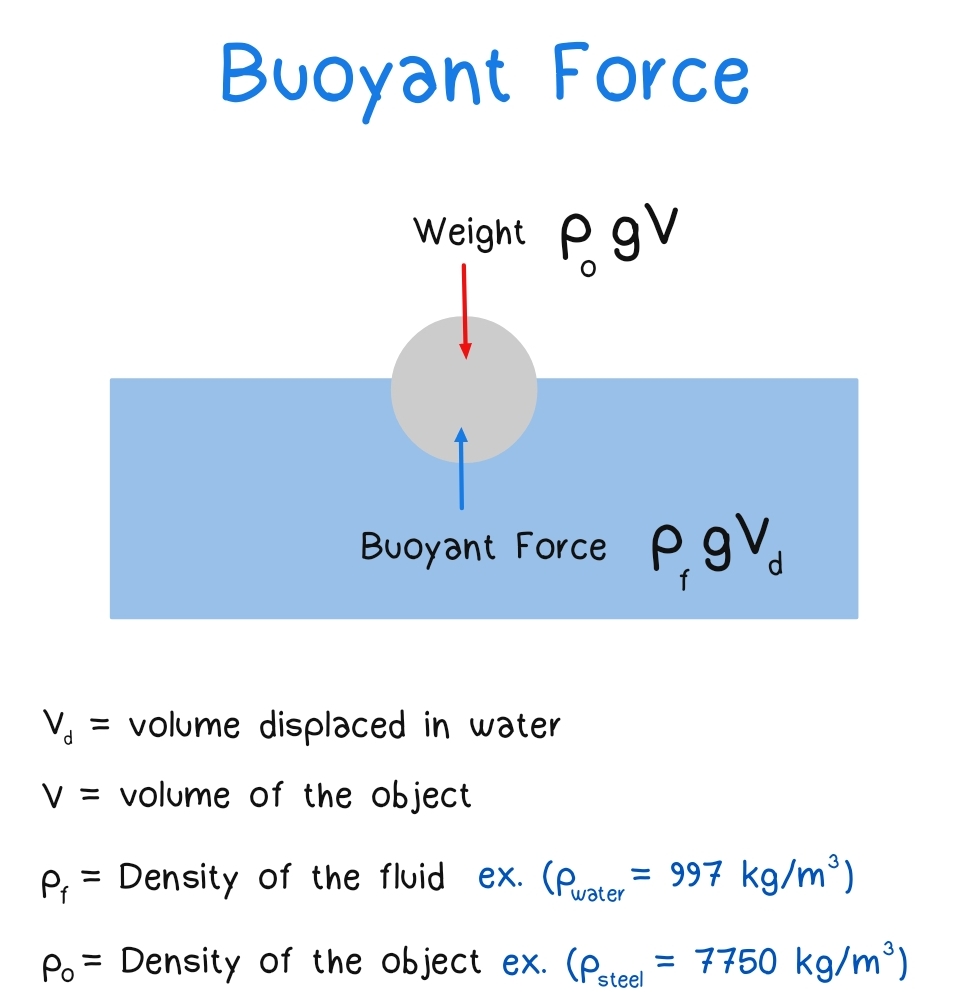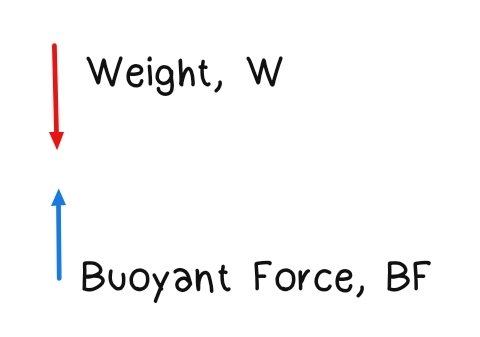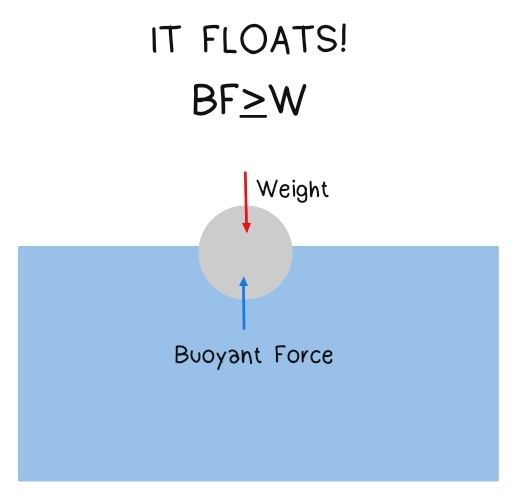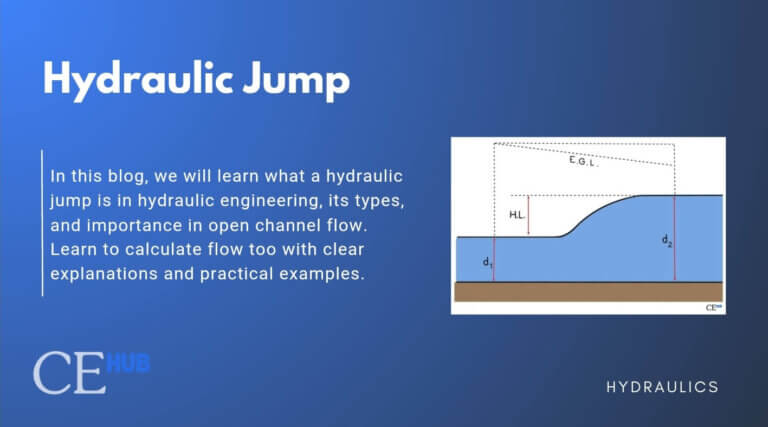Understanding Buoyancy Meaning and formulas
What you’ll learn:
- What is Buoyancy?
- How it is related to Archimedes’ Principle
- Mathematical Equation of Buoyancy
- When to sink and not to sink?
What is Buoyancy?
Buoyancy, to put it simply, is the upward-directed force a fluid exerts on an object that’s been immersed into it. What’s happening here? The pressure at the bottom of the submerged object is higher than at the top, so the fluid sort of “lifts” the object. The denser the fluid, the more significant the force. That’s why it’s easier to float in saltwater than in a swimming pool.
Archimedes’ Principle
Buoyant Force Equivalence
Buoyant Force is equal to the weight of the fluid displaced by the object.
Universal Fluid Application
This applies to all forms of fluids, may it be liquid or gases
Ancient Discovery “Eureka”
First theorized by Archimedes in the 3rd century BCE.
Mathematical Equation for Buoyancy
The buoyant force is given by:


By Free Body Diagram:

Case I: It Floats

Case II: It Sinks

Fluid Mechanics Cheat Sheet
Struggling to recall the formulas for Bernoulli’s Equation, Hydrostatic Pressure, or Flow Rate?
Download my Fluid Mechanics Cheat Sheet for Civil Engineers — your ultimate cheat sheet – a complete formula notes for your exams.
The Paradox of Buoyancy: The Needle vs. The Ship
Why does a small steel needle sinks, but a massive ship floats?The condition for an object to float is that: IT’S DENSITY and VOLUME.
Needle
- Material: steel (density ≈ 7850 kg/m³)
- The Volume is small
- Cross-sectional area is tiny
- Water displaced: very little
Ship
- Material: steel + air inside hull
- Volume: very large due to hollow shape
- Cross-sectional area is massive
- Water displaced: a lot
Even though a ship is very heavy, its wide hull displaces a large volume of water, creating a huge buoyant force. The ship’s broad bottom ensures that it displaces a significant amount of water. Additionally, because the ship is hollow – even though they are both steel on the outside, its overall average density (mass divided by total volume) is lower than the density of water, allowing it to float.







